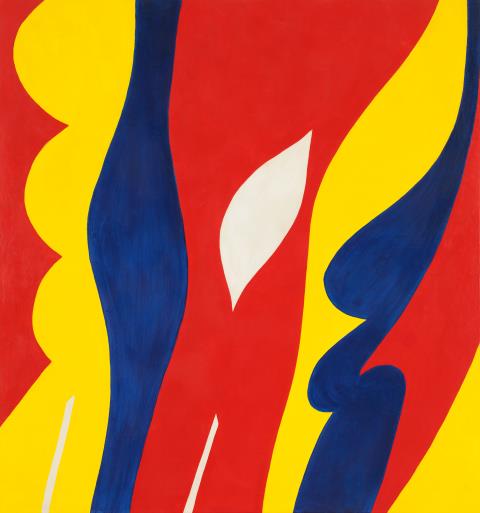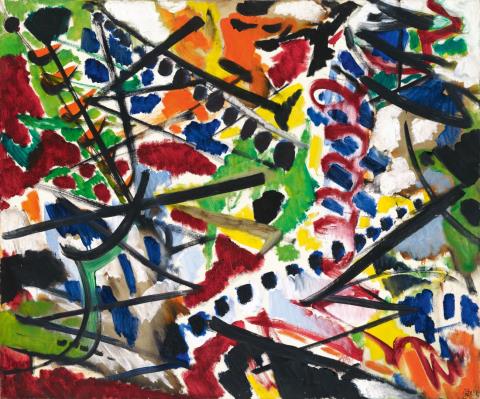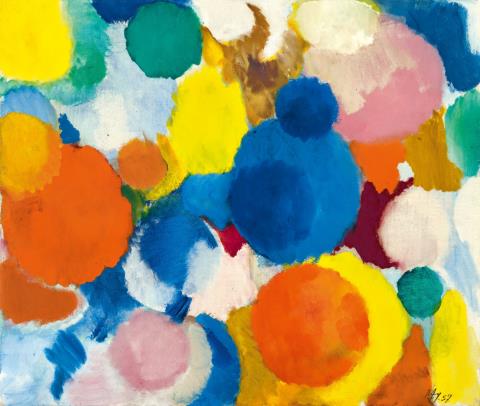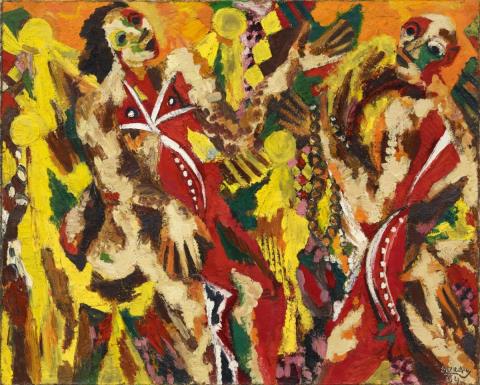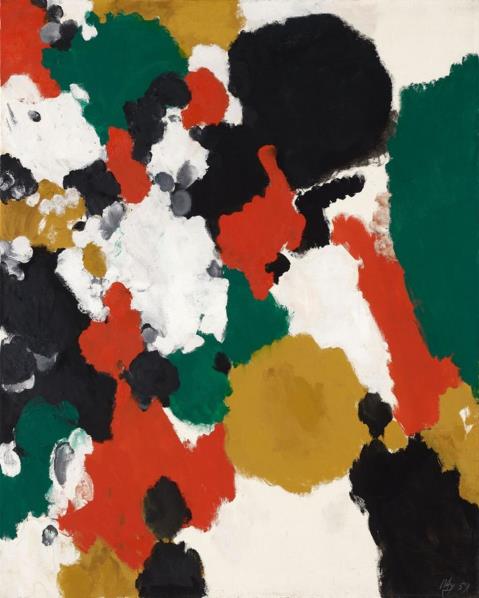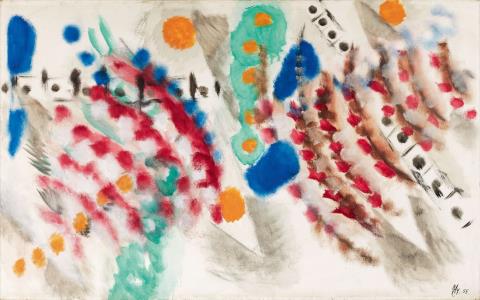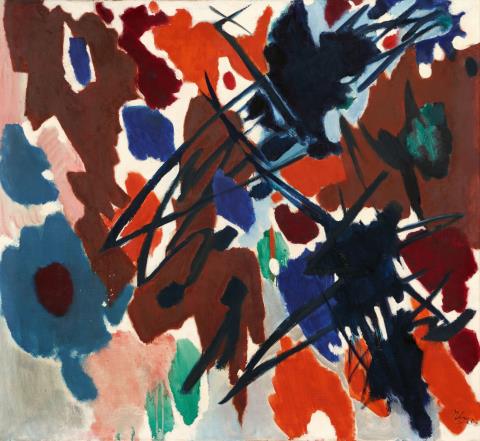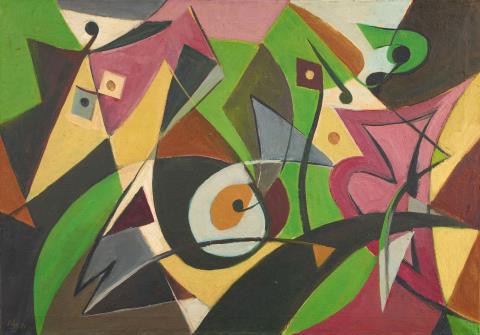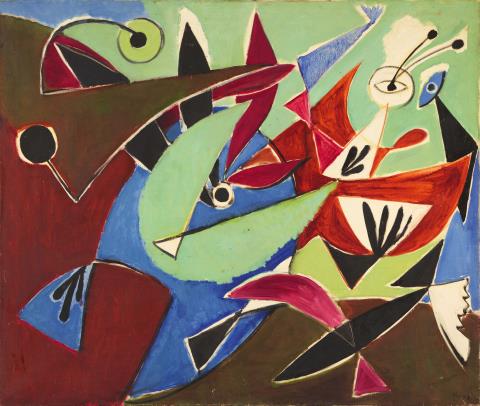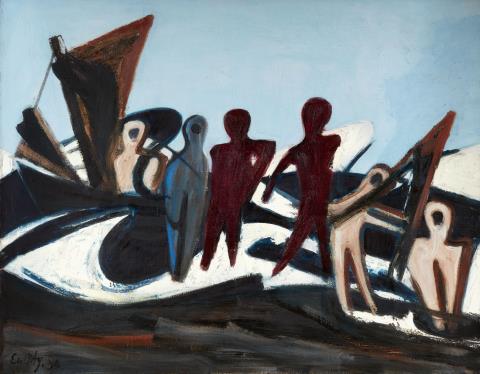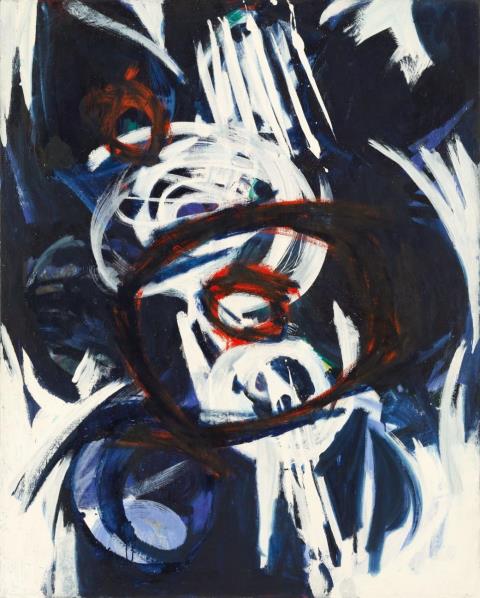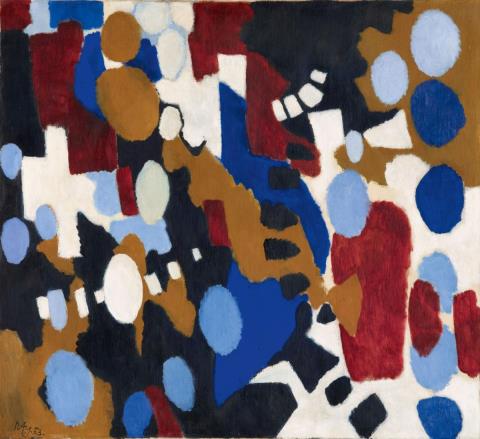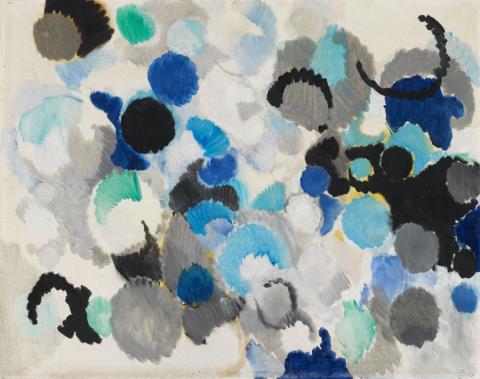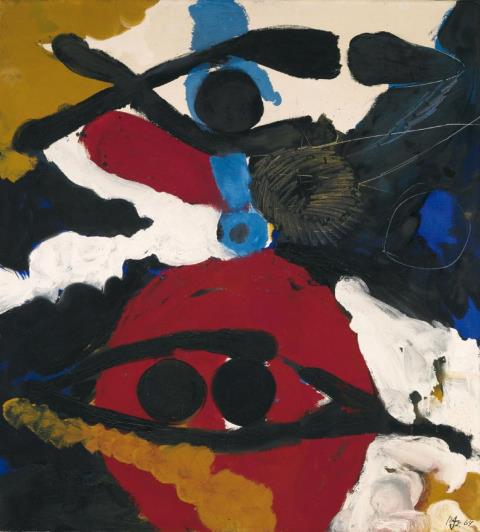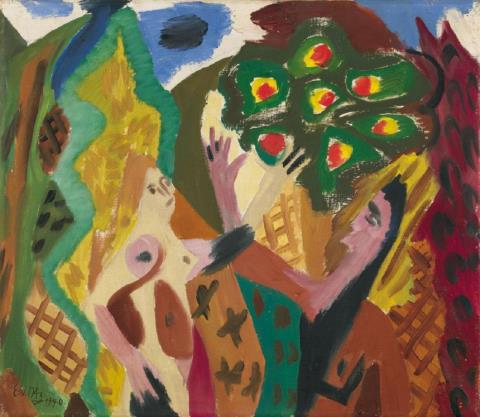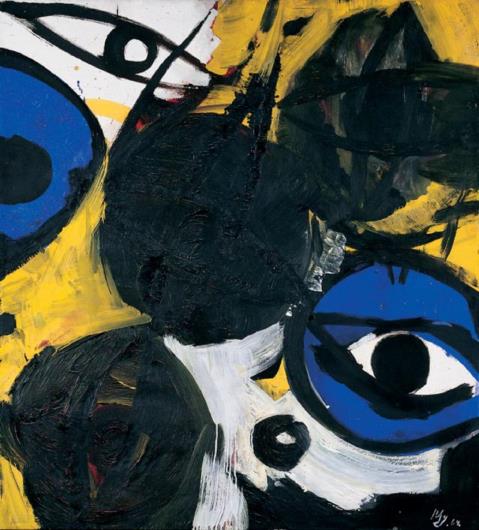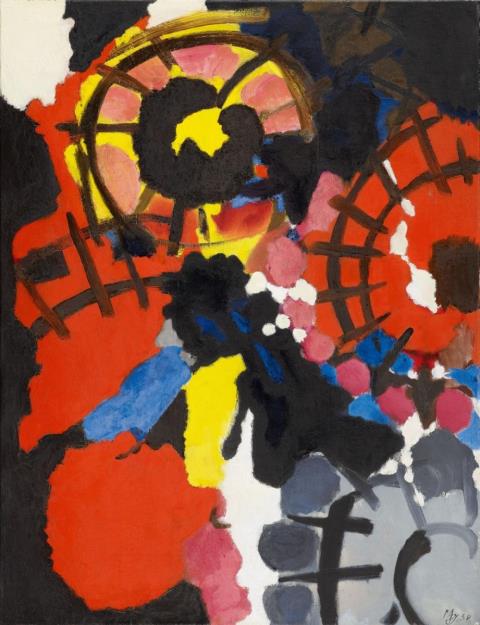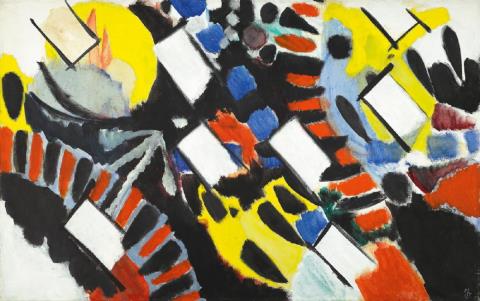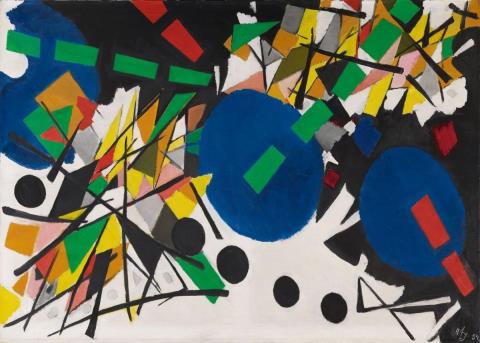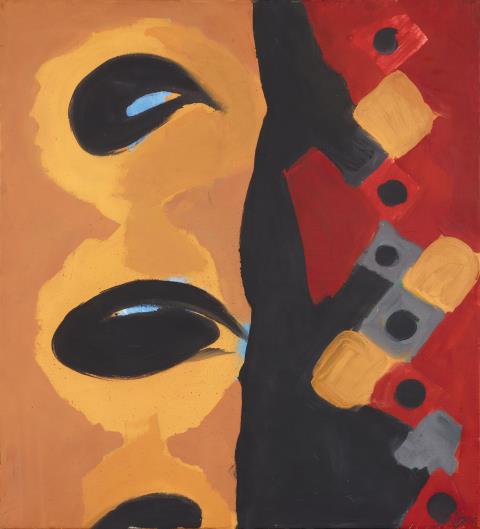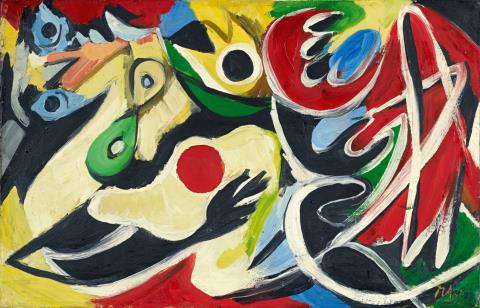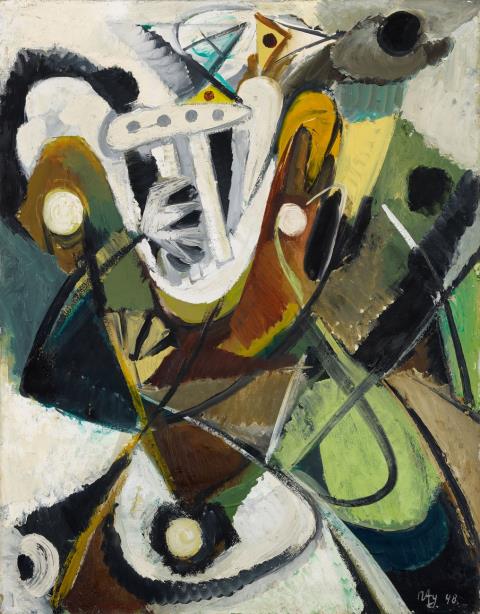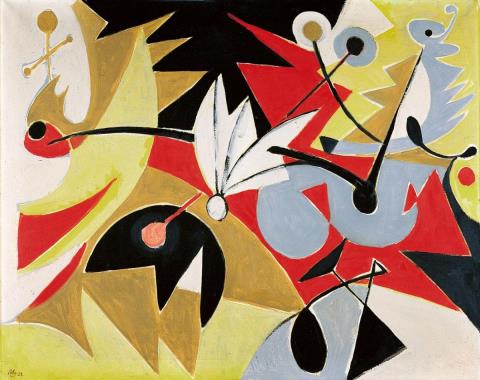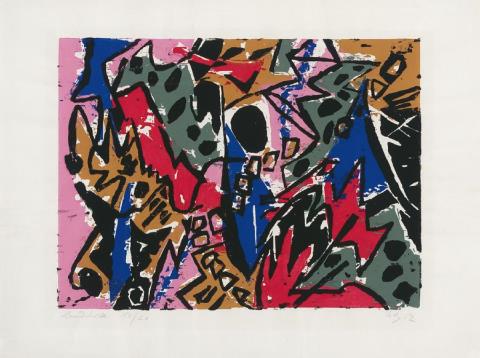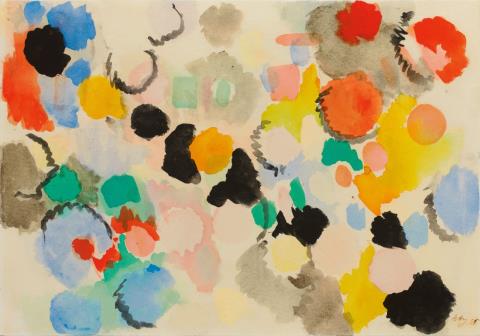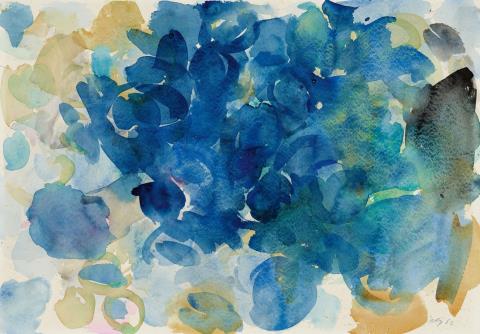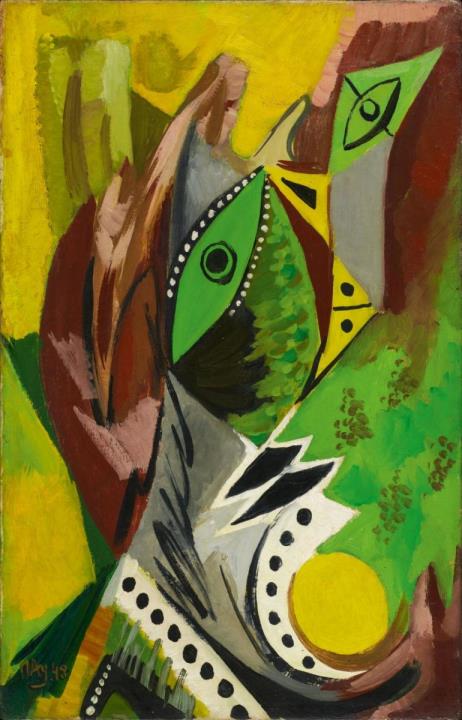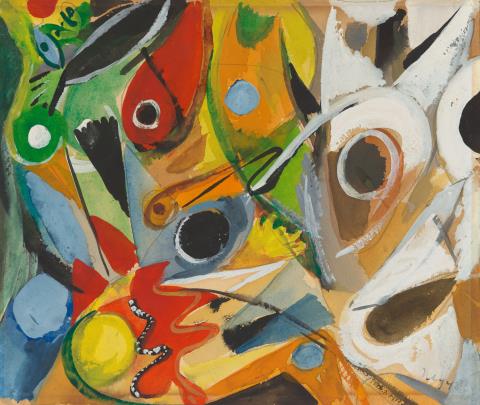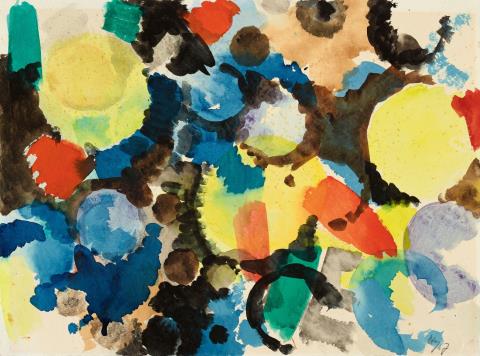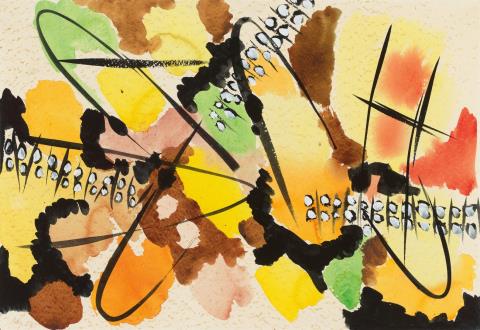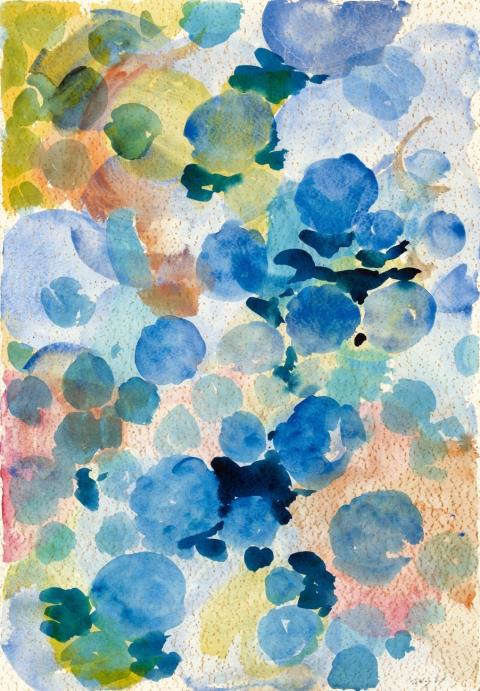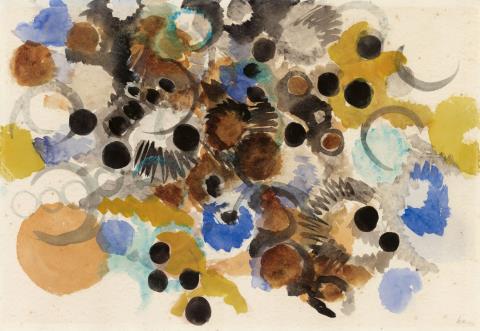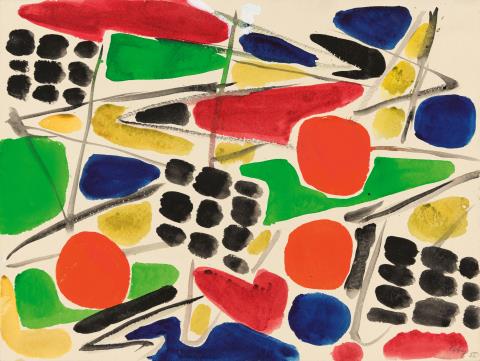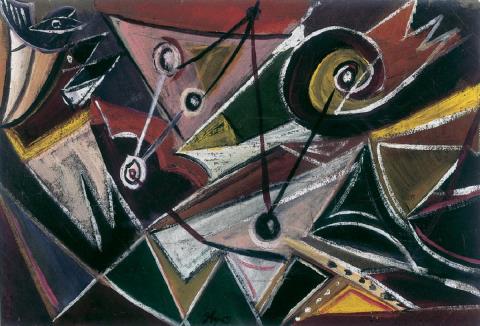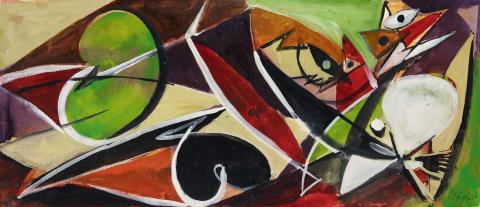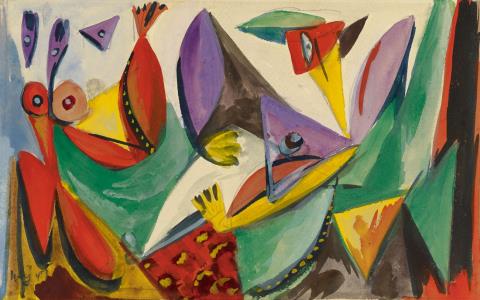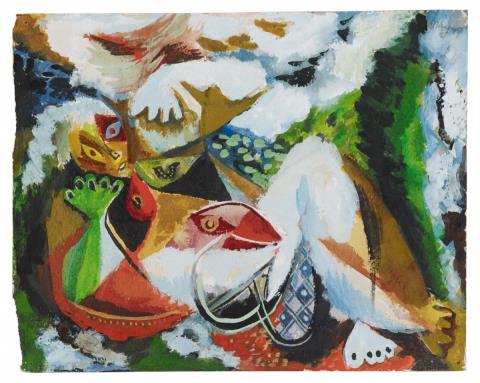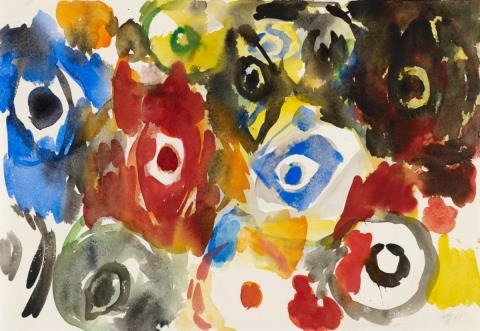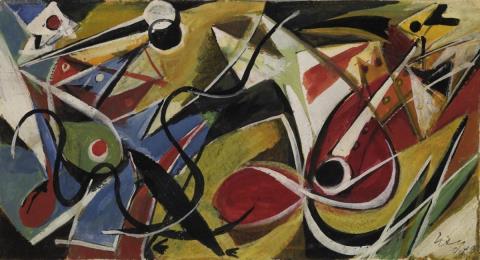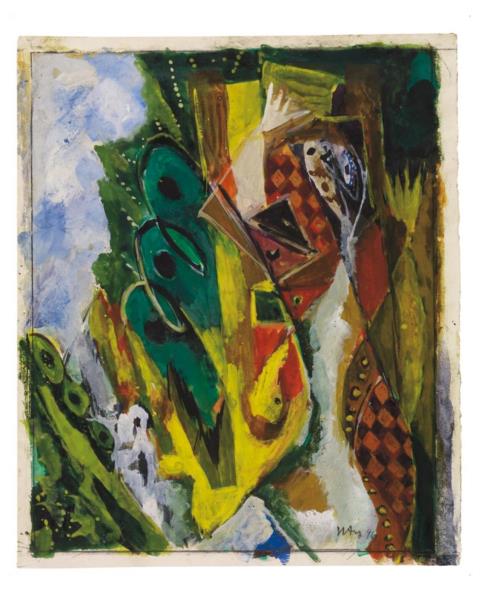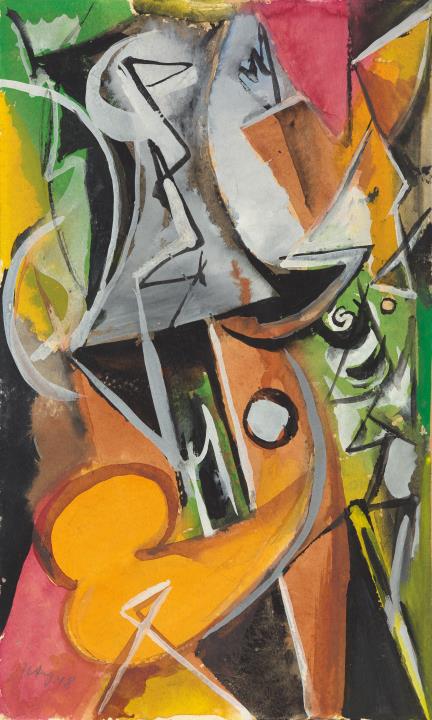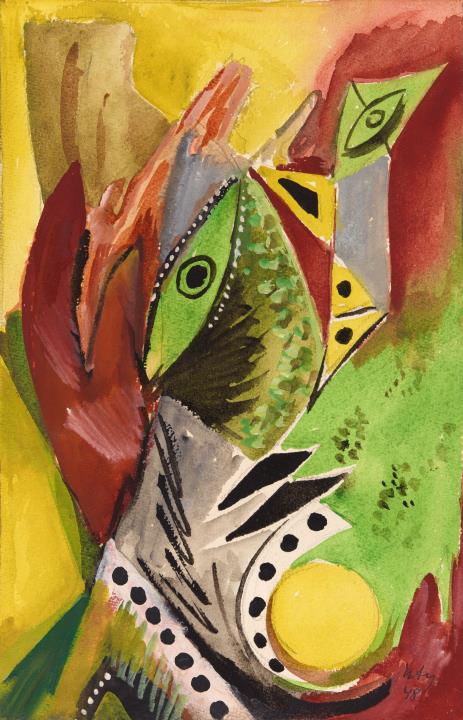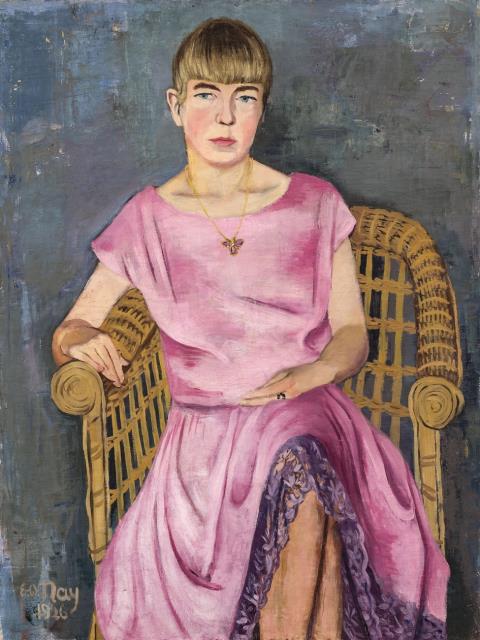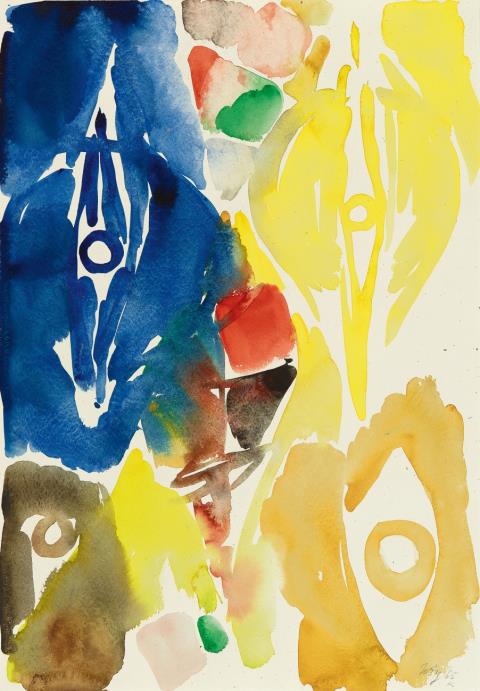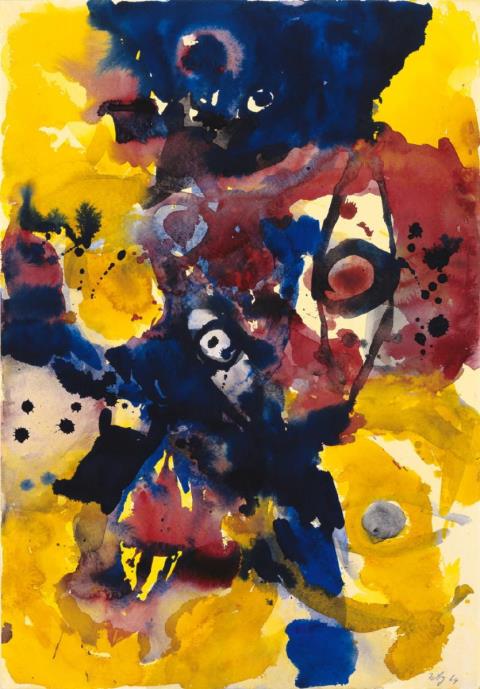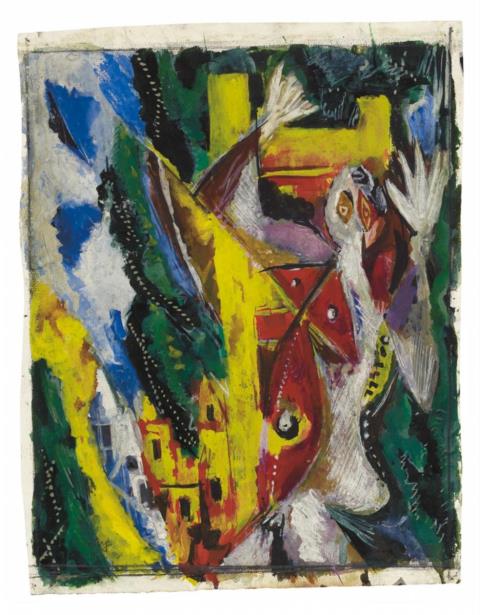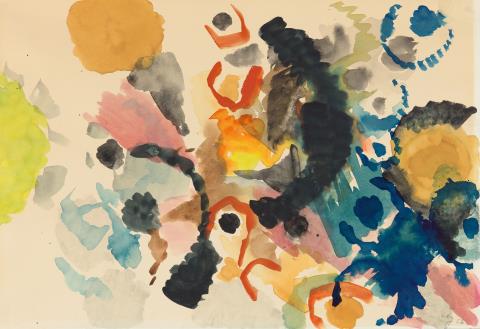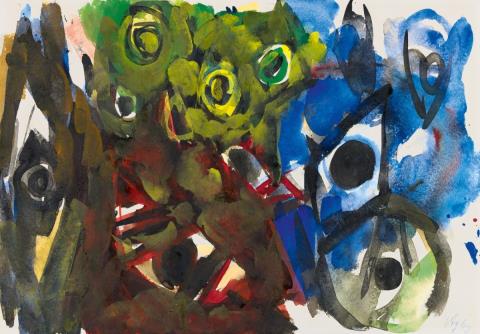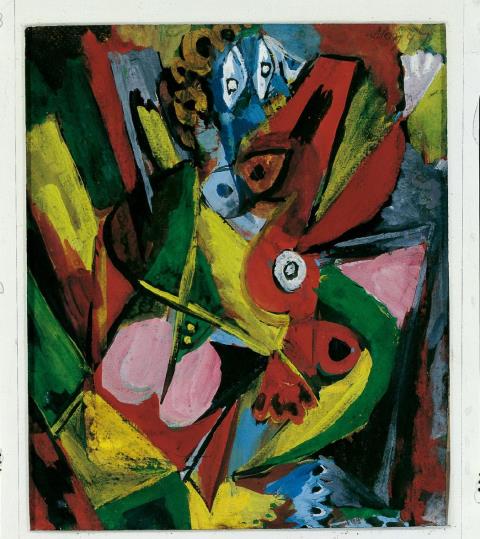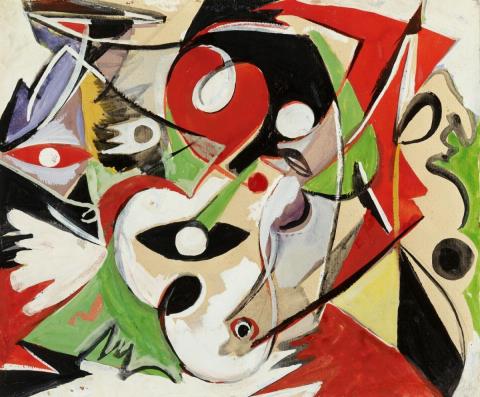Ernst Wilhelm Nay was different throughout his life: his work cannot be attributed to any artistic direction; the artist - one of the most important German post-war painters – articulated himself in his very own language of colour and form which he developed in several phases, abandoning the representational early on.
(...) Continue readingErnst Wilhelm Nay – Early artistic attempt as an autodictat, lessons with Karl Hofer
Ernst Wilhelm Nay was born on 11 June 1902 in Berlin the second of six children to the state civil servant Johannes Nay and his wife Elisabeth. In 1912 he enrolled at the Humanistische Gymnasium in Berlin-Wilmersdorf, and in 1914 lost his father in the First World War. In 1915 Nay moved to the Schulpforta boarding school in Thüringen where his interest for modern art was awakened and he made his first attempts at painting. After successfully finishing his schooling in 1921, he began a bookseller’s apprenticeship at the Berlin book dealer Gsellius, which he left however after only a few months. As an autodictat, Ernst Wilhelm Nay continued practising painting, producing early portraits and landscape pictures. While earning his living as a bookseller at Kaufhaus des Westens as well as helping out as a film architect, he took an evening course in life drawing at the Kunstgewerbeschule in Berlin. He presented three of his early works to Karl Hofer to apply for the Akademie der Bildende Künste, and on Hofer’s intercession, Nay received a scholarship and was allowed to present his “Bildnis Franz Reuter” at the spring exhibition of the Preußische Akademie der Künste. Hofer also include the talented autodictat in his painting class and even made him his master pupil.
First sales, marriage and political defamation
During his painting studies, Ernst Wilhelm Nay was able to sell his first works to museums in Hannover and Lübeck. The art historian Carl Georg Heise mediated a stay on the island of Bornholm which encouraged the artist to his successful series “Strandbilder”. In 1931, a scholarship at the Villa Massimo in Rome led to a series of small format abstract pictures. In 1932 he married his first wife Helene Kirchner, know as Elly, who he had met as a model at the Berlin Akademie, and that same year he became acquainted with the Munich art dealer Günther Franke who would go on to prove himself a true friend and patron. Whilst Nay could celebrate artistic success at this time, he also had to deal with politically motivated rejection, which was reflected in magazines, and finally in an exhibition ban. When some of his pictures were confiscated, Edvard Munch helped him by financing a trip to Norway. On two visits to Lofoten, the “Lofotenbilder” were created. In 1940 he was called up for military service. In order to protect his picture from destruction, he sent a large part to an uncle in Lausitz. His studio was actually destroyed in a bombing raid.
Successful post-war years, participant in the Biennale and documenta
Ernst Wilhelm Nay survived the war as a cartographer, and after his release by the Americans, Hanna Bekker vom Rath organised a small studio for him. Thanks to good contacts, he quickly got back on his feet and in 1946 held his first post-war exhibition. He took part in the Venice Biennale in 1948, with his series of pictures “Hekate”, inspired by Greek mythology, receiving a lot of attention. After separating from his first wife, he married a second time in 1949 and in 1951 moved to Cologne. In 1954 he began the “Scheibenbilder”. Nay wrote articles on art theory, participated several times at documenta and was a member of the Deutscher Künstlerverband. Ernst Wilhelm Nay has received prizes and awards for his internationally celebrated works and was honoured with a retrospective within his lifetime.
Ernst Wilhelm May died of heart failure on 8 April 1968 in Cologne.
Ernst Wilhelm Nay - Works that have already been sold at Kunsthaus Lempertz:
Ernst Wilhelm Nay -
Vega
Ernst Wilhelm Nay -
Jota
Ernst Wilhelm Nay -
Fischer

